Sweet potatoes are not only a delicious and nutritious crop but also a rewarding one to grow at home. However, pests can be a major obstacle for gardeners hoping for a bountiful harvest. The good news? You don’t need harsh chemicals to protect your crop. With the right organic methods, you can prevent pest damage while keeping your soil and environment healthy. In this guide, you’ll learn how to identify common sweet potato pests, understand their habits, and adopt effective, eco-friendly techniques to keep them away.
Common Pests That Attack Sweet Potatoes
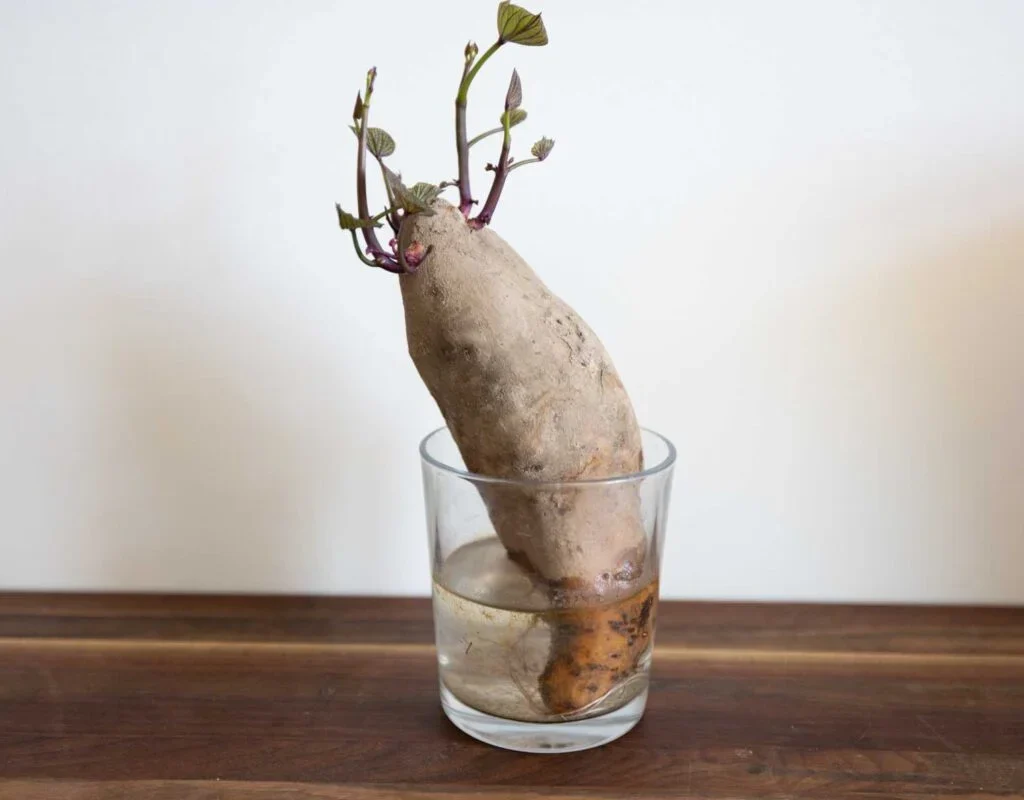
Before diving into organic prevention methods, it’s important to recognize your enemies. The most common sweet potato pests include:
- Sweet Potato Weevil (Cylas formicarius)
These tiny, dark-colored insects are among the most destructive pests. They lay eggs in vines and tubers, and their larvae feed internally, causing decay and bitter flavors. - Wireworms
These are the larvae of click beetles. They bore into the roots and tubers, leaving holes and encouraging fungal diseases. - Flea Beetles
Small, jumping insects that chew tiny holes in leaves, reducing the plant’s ability to photosynthesize effectively. - Whiteflies and Aphids
These sap-sucking insects weaken plants, cause stunted growth, and transmit viral diseases. - Cutworms and Armyworms
These nocturnal pests chew on stems, vines, and foliage, especially in young plants.
Organic Pest Prevention Strategies
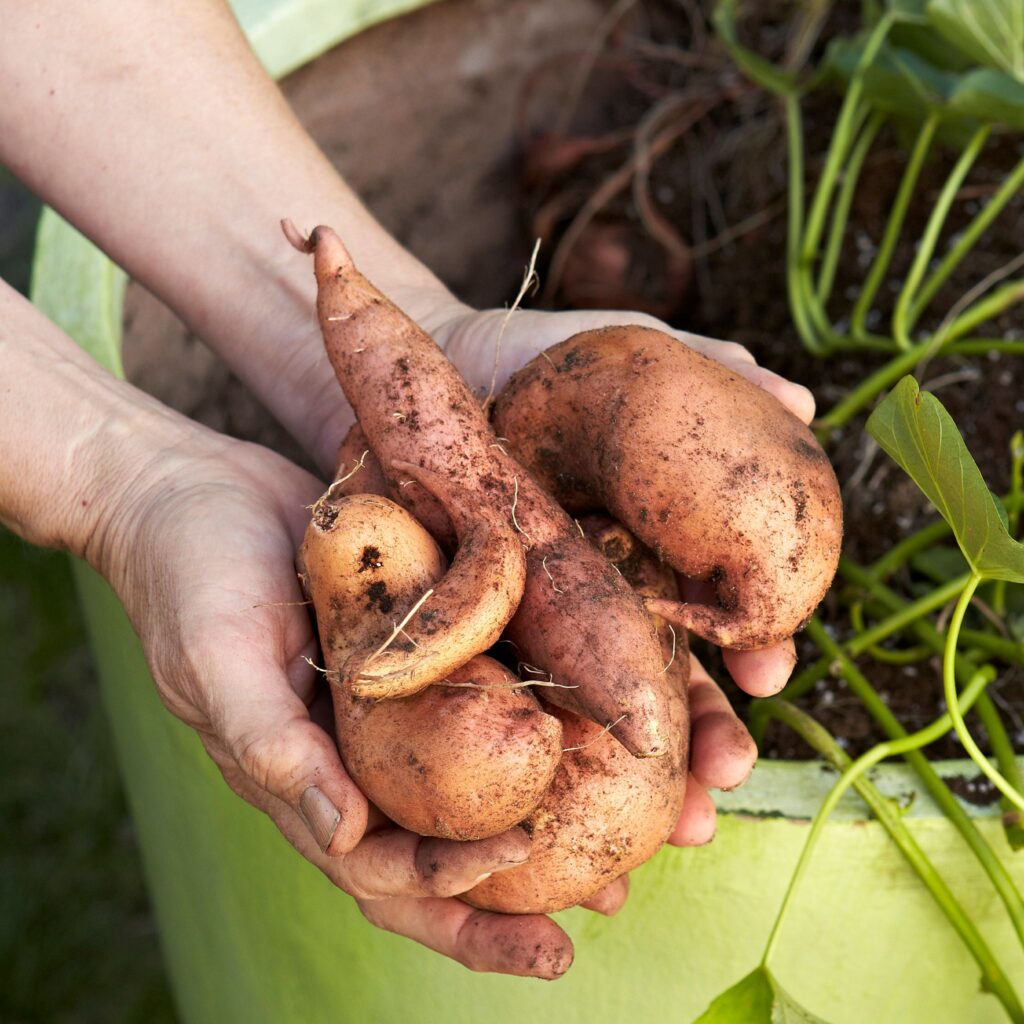
1. Crop Rotation
One of the most fundamental organic techniques is crop rotation. Never plant sweet potatoes in the same soil where they were grown the previous season. This breaks the lifecycle of pests like sweet potato weevils and wireworms, who overwinter in the soil. Rotate with non-host crops like legumes or leafy greens for best results.
2. Soil Preparation and Solarization
Before planting, prepare the soil by removing debris and weeds, which often harbor pests. You can also solarize the soil by covering it with clear plastic during the hottest months. This heats the soil and kills soil-borne pests and eggs naturally.
3. Use Resistant Varieties
Choose sweet potato varieties that show resistance to weevils and fungal infections. Examples include ‘Centennial’, ‘Beauregard’, and ‘Georgia Jet’. These may still need monitoring but can reduce overall pest pressure.
4. Floating Row Covers
Use lightweight floating row covers to protect young plants from flea beetles and aphids. These allow sunlight and water to reach the plants but act as a physical barrier to most pests.
5. Companion Planting
Nature offers its own pest control through companion planting. Interplant sweet potatoes with pest-repelling herbs and flowers such as:
- Marigolds: Repel nematodes and weevils.
- Basil and Mint: Deter aphids and whiteflies.
- Garlic and Onions: Confuse scent-driven pests and discourage insects from laying eggs.
This method also boosts biodiversity and attracts beneficial insects.
6. Neem Oil Spray
Neem oil, derived from the neem tree, is a potent organic insecticide and fungicide. Spray a diluted neem solution on leaves and stems weekly or after rains to deter whiteflies, aphids, and beetles. It disrupts insect hormonal systems and prevents feeding and reproduction.
7. Diatomaceous Earth
This powdery substance made from fossilized algae is a safe and natural deterrent for crawling insects like weevils and cutworms. Sprinkle it around the base of your plants. It damages the exoskeletons of insects, causing dehydration.
8. Handpicking and Traps
Manual removal remains one of the oldest and most effective methods. Check your plants in the early morning or evening and handpick pests such as armyworms and cutworms. Use yellow sticky traps to catch whiteflies or flea beetles.
For weevils, use pheromone traps to detect early infestations and monitor population levels.
9. Beneficial Insects
Encourage or introduce natural predators like:
- Ladybugs and lacewings for aphids
- Parasitic wasps for whiteflies
- Predatory beetles and nematodes for weevils and cutworms
Avoid using broad-spectrum insecticides that might kill these allies. Creating a diverse garden environment supports their survival.
10. Mulching and Weed Control
Organic mulch helps suppress weeds that host pests and conserves soil moisture. However, it should be monitored to prevent it from becoming a shelter for cutworms. Keep mulch about 2-3 inches thick and pull it away slightly from stems.
Regular weeding reduces pest habitats and improves air circulation around the base of the plants, reducing fungal issues.
Monitoring and Early Detection
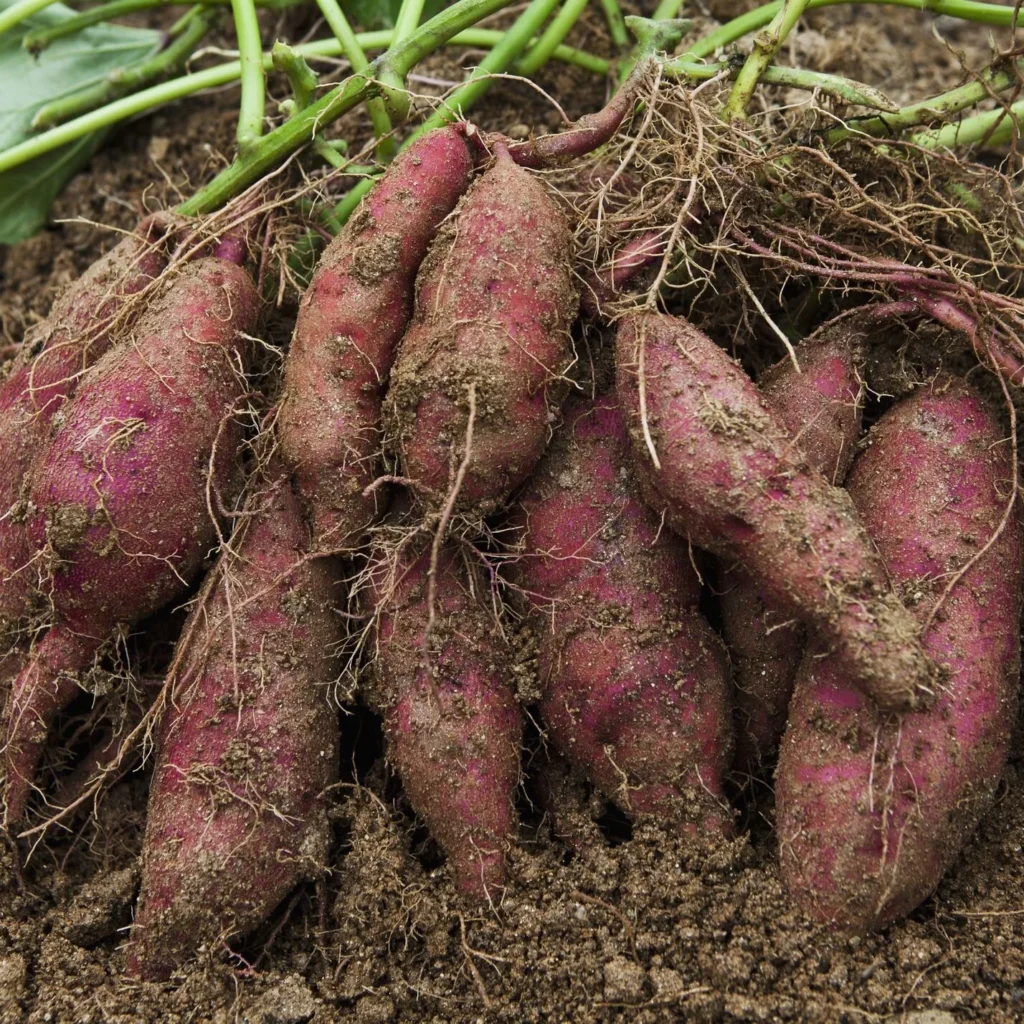
Regular observation is key to organic gardening. Check leaves (especially undersides), vines, and roots weekly for signs of:
- Holes or chew marks
- Discoloration or curling leaves
- Insect droppings
- Sticky residue or mold (often from aphids or whiteflies)
Early detection enables timely organic intervention before pests multiply and cause major damage.
Natural Homemade Sprays

Here are a few DIY organic sprays to try:
- Garlic-Chili Spray
Blend 10 cloves of garlic, 2 hot chilies, and 1 liter of water. Let it sit overnight, strain, and spray on leaves. - Soap Spray
Mix 2 teaspoons of mild dish soap in 1 liter of water. It suffocates soft-bodied pests like aphids and whiteflies. - Baking Soda Mix
Combine 1 tablespoon of baking soda, 1 teaspoon of oil, and 1 liter of water. This is good for fungal issues triggered by pest wounds.
Always test sprays on a small area first to ensure no leaf burn occurs.
Seasonal Timing and Planting Practices
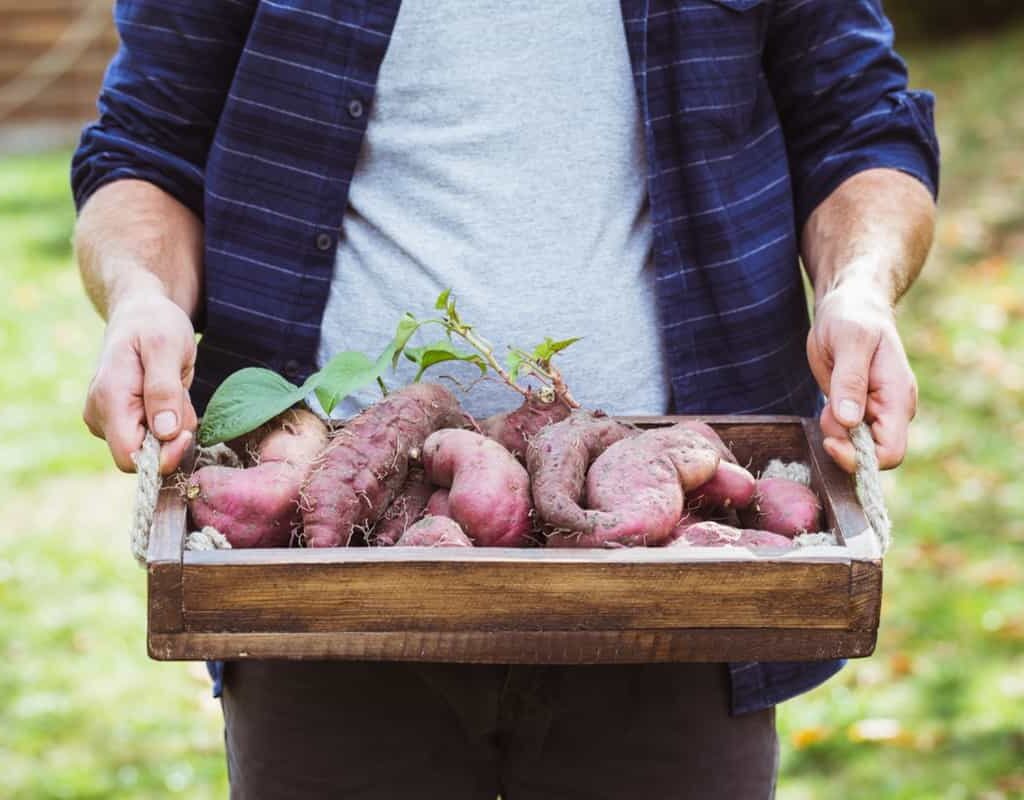
Time your planting to avoid peak pest periods. In many regions, late spring to early summer is ideal. Start slips indoors if possible to get a head start.
Ensure proper spacing between plants (12–18 inches apart) to improve airflow and make it harder for pests to hop between plants. Healthy spacing also reduces fungal issues.
Conclusion
Protecting your sweet potato crop from pests doesn’t require chemical warfare. By using a combination of smart planting practices, companion planting, natural sprays, and beneficial insects, you can grow healthy, pest-free sweet potatoes in an eco-friendly way. Organic pest control is not only better for the environment—it creates a balanced garden ecosystem where your plants can truly thrive.
When you learn to work with nature, not against it, your sweet potato harvest will be all the sweeter.
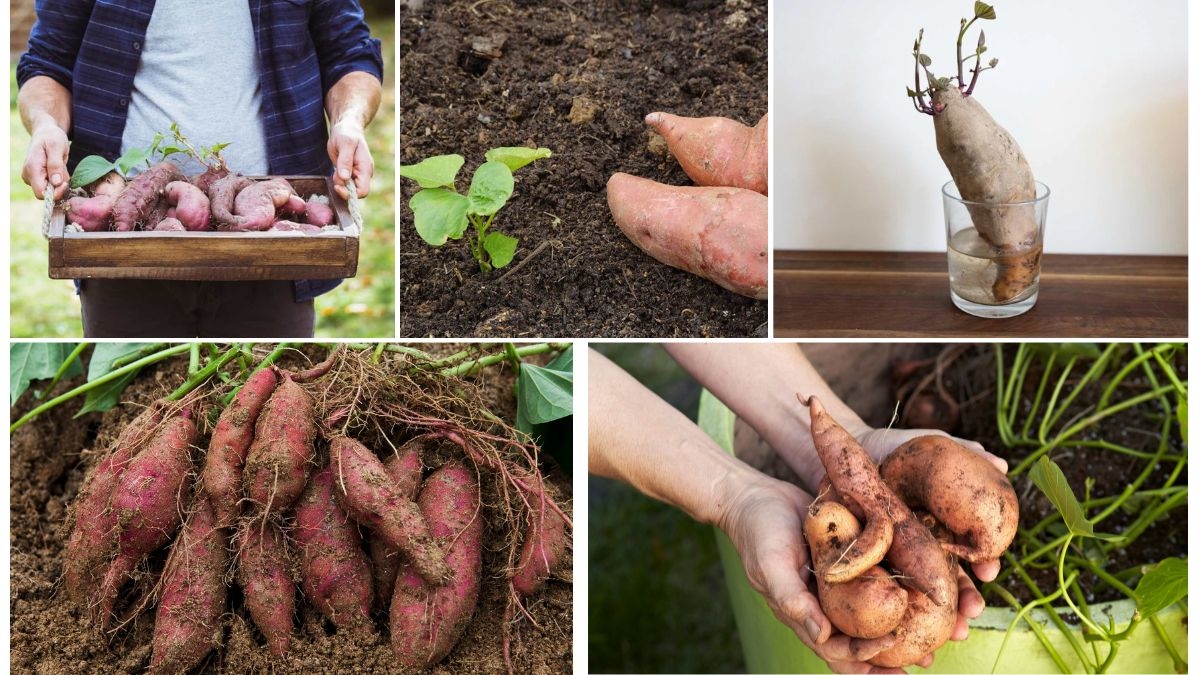





Leave A Comment